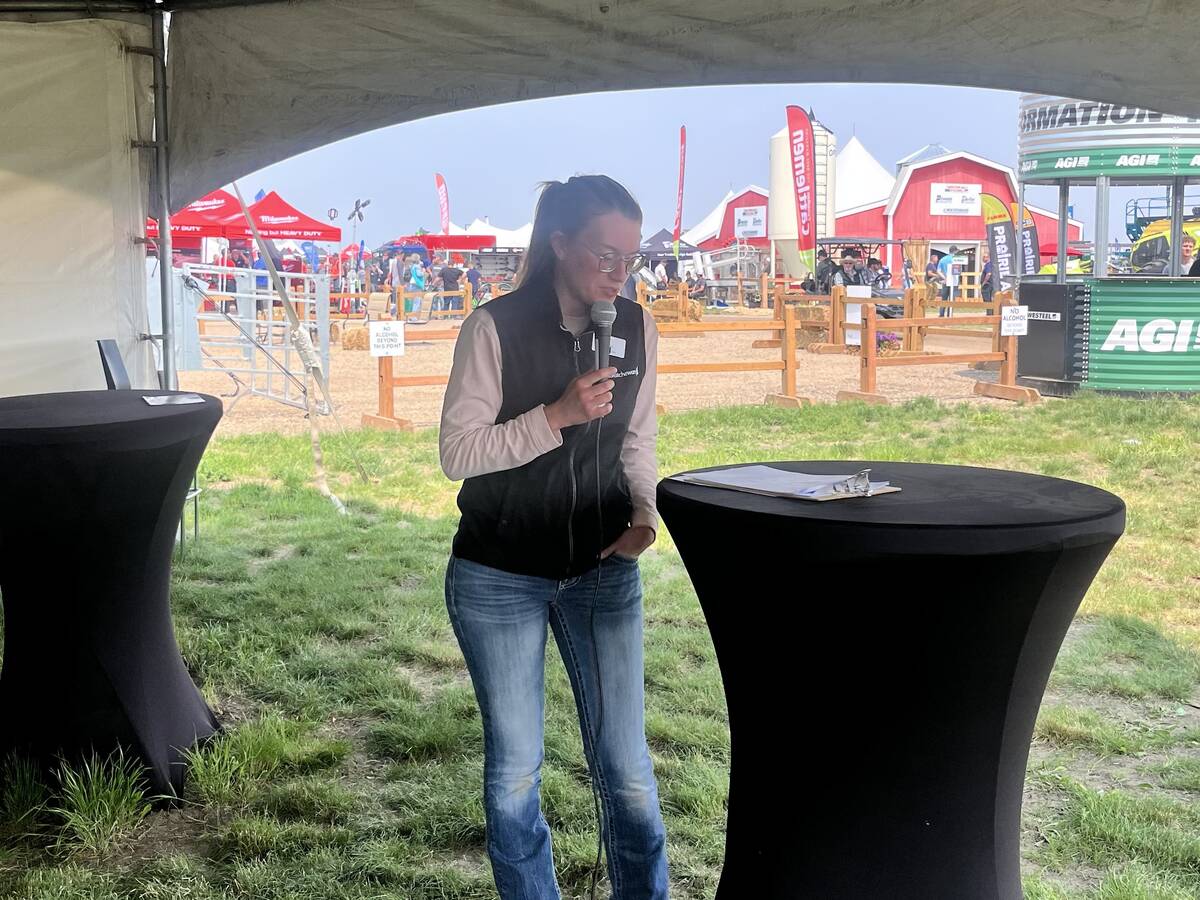NEW YORK CITY, N.Y. – Open outcry derivatives trading seems to be dying around the world, except in the United States.
In Europe it has faded and it doesn’t exist in Canada anymore, with both the Montreal and Winnipeg exchanges cashing in their human traders for computer servers.
But in the pits of New York, Chicago, Kansas City and Minneapolis, open outcry trading is going strong. Ted Davis, managing director of corporate communications with the New York Board of Trade, thinks it may be quintessentially American, something that works and something worth keeping.
Read Also

Ag in Motion speaker highlights need for biosecurity on cattle operations
Ag in Motion highlights need for biosecurity on cattle farms. Government of Saskatchewan provides checklist on what you can do to make your cattle operation more biosecure.
“We have had 136 years of open outcry, and that’s a long history of in-your-face trading,” said Davis with a smile.
He thinks Americans’ willingness to be extroverted and publicly combative has made the U.S. open outcry system work, while it has failed in more polite places like Canada and the European Union, where people are less willing to haggle, argue and gesticulate in the faces of their fellow traders.
That, combined with agricultural markets’ uniqueness, means that open outcry may be the best system for trading agricultural commodities for many years, Davis said.
That’s not an argument that sits well with commodities guru and commodity index fund investor Jim Rogers.
“Balderdash,” said Rogers in an interview in his Upper West Side home in New York City.
“Anybody protecting an entrenched position always says that there’s a difference, that they cannot do a new thing no matter what that new thing is and whatever the product is.
“Total balderdash.”
The entrenched position Rogers refers to is the ownership structure of most of the exchanges in North America, which are controlled by seatholders who have the right to trade in the exchange. The structure is similar to that of a mutual life insurance company, which is owned by the company’s policyholders.
When the Winnipeg Commodity Exchange “demutualized” and became a private company, many predicted that the trading pits and open outcry system would soon be scrapped in favour of electronic trading.
That is exactly what happened, although exchange management said the two were not directly linked.
Rogers said open outcry trading is the biggest impediment to making the small commodity exchanges develop and grow.
“The main thing is to go electronic. It will be cheaper and more efficient and more people could play and you’d have more liquidity,” said Rogers, who was able to retire in his late 30s because of money he made as a hedge fund operator.
He is the world’s leading voice on commodity market trends and is author of the book Hot Commodities, which has been widely read in the investing world.
The book argues that the world is in the midst of a 15 year boom in commodity prices and a corresponding equities slump, and investors should move some of their portfolios into commodities.
This has encouraged hedge funds to invest heavily in commodities and helped spur the spread of commodities index funds, which create baskets of commodities for investors to own so they can passively follow the commodities markets. Rogers operates his own commodity index fund.
Commodity exchanges are always fearful of losing their liquidity, which is the amount of trading that occurs at the exchange. The more trading that occurs, the more easily investors can get in and out of positions.
Some of the smaller futures contracts and smaller exchanges have low liquidity, and that sometimes means Rogers has to modify his goal of accurately reflecting the use of the world’s commodities in his index.
For instance, because of low liquidity in silk and wool contracts he has had to slightly lower his weighting of those commodities in his index, but has increased his weighting of cotton to compensate. Since all three are used in the textile industry, overweighting cotton allows him to still accurately reflect the importance of textiles as an overall product.
Rogers said the Winnipeg Commodity Exchange needs higher volumes.
“The Winnipeg exchange is not as liquid as one would hope, but it seems to be getting more and more active and we presume that if commodities become more and more interesting to more people, there will be more liquidity on the exchange,” said Rogers.
If governments want to increase liquidity on exchanges, there is an easy way: tax incentives.
“It’ll work if people are really dead serious about increasing liquidity and futures trading,” he said.
But overall, Rogers thinks more electronic trading in the exchanges is the best step that could be taken now. It would help increase liquidity and he doesn’t have any time for the argument that American traders are somehow different and better at making a market with open outcry trading.
“There are essentially no open outcry systems left in the world except for in North America. Somehow or other the rest of the world has been able to adjust,” said Rogers.
“The Chinese don’t have open outcry and they trade more soybeans than Chicago does. The Chinese have been trading stuff for 7,000, 8,000 years somehow or other. They know what they’re doing.”

















